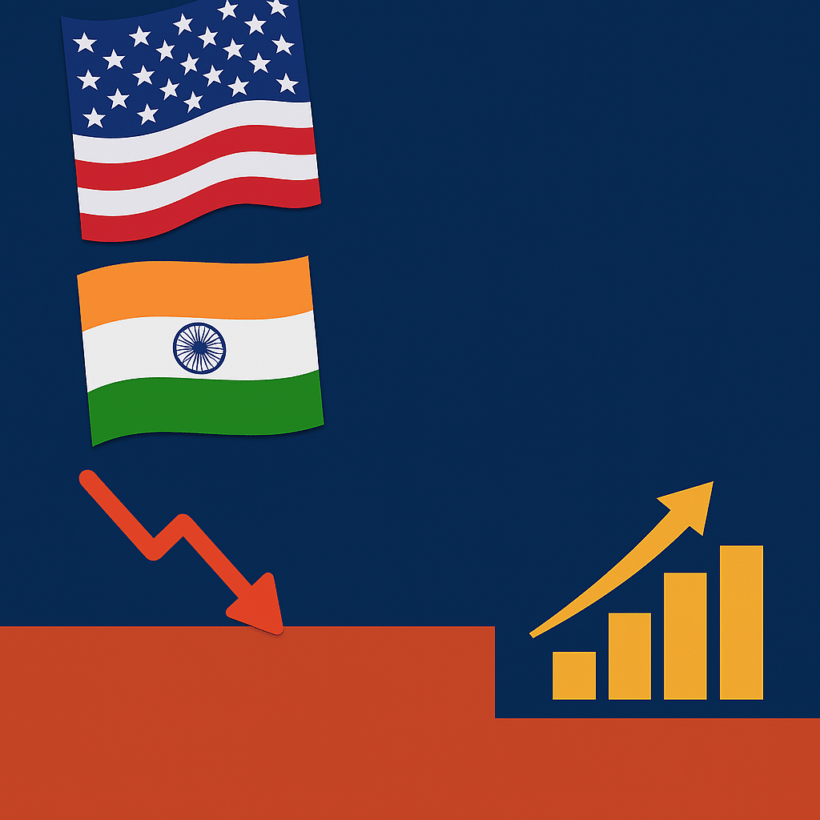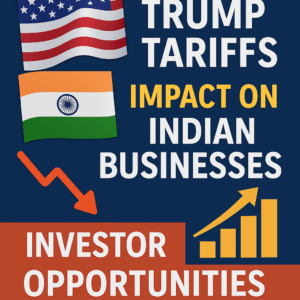Trump Tariffs and Indian Businesses: Emerging Opportunities for Smart Investors
Disclaimer: This blog is for general information only. Please consult a certified financial advisor before making investment decisions.
Introduction: How Trump’s Tariffs Created a Shockwave
When Donald Trump launched his “America First” tariff policy, the world took notice. These trade measures didn’t just hit China—they triggered global tremors. India, while not directly targeted, saw ripple effects across multiple industries. Some sectors suffered losses. Others emerged stronger and more competitive.
For investors, understanding these changes is essential. Global trade policies are no longer distant. They influence earnings, markets, and long-term growth.
Quick Recap: What Were Trump’s Tariffs All About?
Trump’s tariff strategy aimed to protect US jobs and reduce trade deficits. His administration imposed heavy duties on imports, especially from China. The move targeted $360 billion worth of Chinese goods. It also covered products from other countries, including steel and aluminum from India.
These tariffs disrupted traditional supply chains. Companies started looking for alternate markets and suppliers. That’s where India stepped in—and started attracting attention from global firms.
Why Indian Investors Must Pay Attention
Trade wars shift market dynamics fast. Industries rise or fall based on how they adapt. For Indian investors, this is both a warning and an opportunity. Those who follow global patterns can benefit from emerging trends. But staying unaware can lead to risky bets.
Winners and Losers: Indian Industries Affected by Trump’s Tariff War
1. Textile and Apparel: Rising Demand, Rising Confidence
China’s textile exports became more expensive. American importers needed alternatives. India, with its skilled labor and capacity, stepped in. Textile exports to the US surged.
Investor Tip: Look for export-oriented textile firms with strong US client bases and scale advantage.
2. Steel and Aluminum: Caught in the Crossfire
India wasn’t spared from Trump’s metal tariffs. A 25% duty on steel and 10% on aluminum hit exports hard. Indian manufacturers lost market share.
Investor Insight: Stick with integrated players with local and global diversification.
3. Pharmaceuticals: Stable Growth in a Volatile World
India’s pharma sector remained stable. The US looked for alternative suppliers, keeping India in demand. Regulatory compliance became key.
Investor Tip: Stick to firms with FDA-compliant facilities and wide export reach.
4. IT Services: Riding the Digital Wave
Global uncertainty slowed outsourcing but increased digital demand. Indian IT adapted with cloud, AI, and automation focus.
Investor Focus: Pick IT firms leading in digital transformation and global delivery models.
5. Auto Components: Speed Bumps on the Trade Route
Auto component makers lost some US clients. Others pivoted to aftermarket and domestic OEMs.
Investor Alert: Avoid firms with high US exposure and weak cost controls.
6. Electronics and Mobile Manufacturing: India’s China+1 Moment
India gained from the global push to reduce dependence on China. Mobile and component production surged, aided by PLI schemes.
Investor Edge: Focus on electronics firms tied to PLI and global manufacturing chains.
New Tailwinds: How India Turned Crisis into Opportunity
Supply Chain Realignment: India Becomes a Global Backup
Global companies started investing in Indian supply chains. This opened up new growth avenues for contract manufacturers and logistics providers.
Atmanirbhar Bharat: India Doubles Down on Self-Reliance
From defense to electronics, India pushed local production. Export incentives and domestic subsidies boosted confidence.
Export Diversification: Finding Growth Beyond the US
India began targeting new markets. EU, Australia, and ASEAN became preferred destinations. Exporters diversified and reduced risk.
Key Sectors to Watch Going Forward
- Specialty Chemicals: Beneficiaries of global de-risking from China.
- Green Energy: Solar and battery makers are in high demand.
- Logistics and Infrastructure: Export growth fuels demand for modern logistics parks and ports.
Caution Flags: What Risks Should Investors Monitor?
- Policy Reversals: US tariff policies may change under future leadership.
- Geopolitical Risks: China-US tensions still affect markets worldwide.
- Currency Volatility: Forex swings impact export earnings.
- Input Cost Inflation: Global disruptions raise input prices across sectors.
Investment Ideas (Not Financial Advice)
- Target export-focused firms with multi-market exposure.
- Track government incentives and policy trends.
- Balance portfolios between global and domestic themes.
- Watch for firms with pricing power and high margins.
Conclusion: Trade Tensions = Investment Opportunities (If You’re Prepared)
The Trump tariffs were disruptive, but India turned the crisis into opportunity. Several industries gained momentum. Smart investors identified these shifts early and benefited.
Today, the lesson is clear. Watch global trends. Understand local execution. Invest in future-ready firms with global linkages. And always do your research.
Reminder: This blog is for educational purposes only. Please consult a licensed financial advisor before investing.
For more content please visit our Business section











